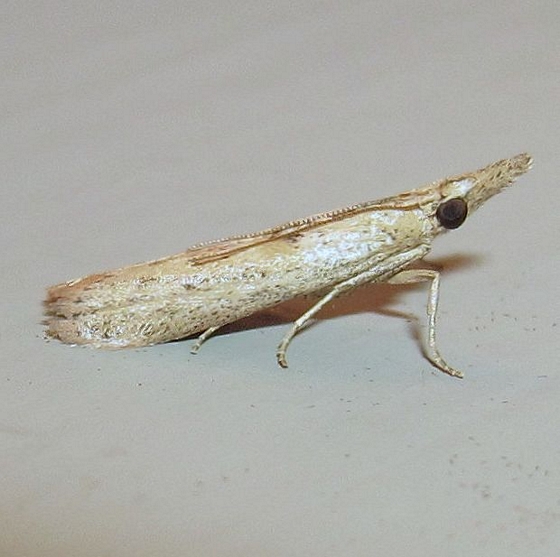Growing up along a creek that snaked its way through my hometown in the Mississippi Delta, I knew more than most people my age about alligatorweed, the invasive water-impeding amaranth weed species clogging waterways across the Southeastern U.S. And, perhaps this was my first lesson on biological control, as I watched alligatorweed slowly but surely decline as a result of the alligatorweed flea beetle, Agasicles hygrophila, or at least that’s how it was explained to me. The beetle was first introduced in the 1960s to eat the thick mats of alligatorweed, and in fact, was the first insect studied for biological control of an aquatic weed species. Soon after its establishment, it became famous for its ability to control alligatorweed in the U.S.
But, the flea beetle did not accomplish this feat entirely alone, and credit is overdue for its accomplice, the alligatorweed stem borer, Arcola malloi (Lepidoptera: Pyralidae: Phycitinae). The stem borer was also introduced as a biocontrol agent shortly after the introduction of the flea beetle to control alligatorweed. And as it turns out, the inconspicuous, phytophagous larvae in the snout moth family synergistically suppresses alligatorweed, along with the famous flea beetle. The team effort suppression of alligatorweed is far greater than the individual.

Flea beetle adults feed on alligatorweed leaves, stripping them from the stems, while the stem borer enters stems and feeds on the vascular tissues from the inside out, limiting the growth of alligatorweed. A single alligatorweed stem borer can destroy up to 9 stems before pupation. The biocontrol program in the U.S. was so successful that herbicide applications for controlling alligatorweed have been greatly reduced where the two insects are established.

So, the next time someone mentions the success of alligatorweed control in the Southeastern U.S., be sure to speak up for the alligatorweed stem borer, Arcola malloi, a true unsung hero of aquatic weed management!
For more detailed information about this beneficial insect, please see my latest Featured Creatures article: http://entnemdept.ufl.edu/Creatures/BENEFICIAL/alligatorweed_stem_borer.htm
For more information on aquatic weed management in Florida, visit the UF/IFAS Center for Aquatic and Invasive Plant Management website: https://plants.ifas.ufl.edu/.
 0
0
